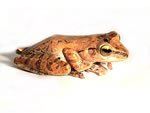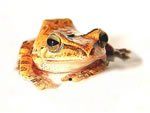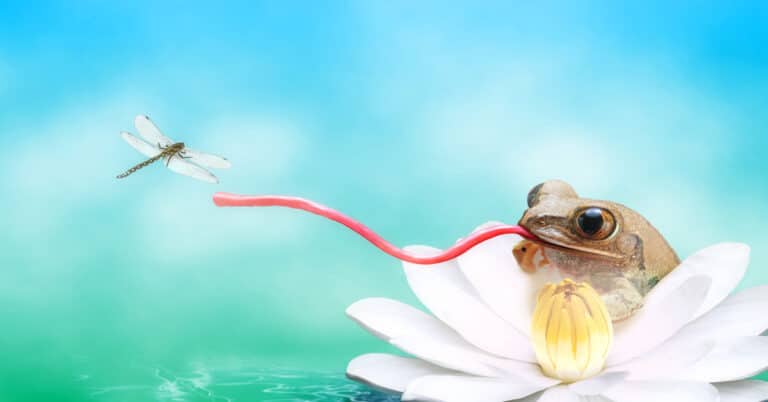Golden Tree Frog
Care Sheet
| Size: | About 1.5 to 4 inches |
| Expected Life Span: | Around 6 years |
| Lifestyle: | Arboreal (lives in trees) |
| Level of Care: | Good for beginners |

General Appearance:

The Golden Tree Frog changes color with changing temperatures. They are usual color ranges between brown and bright yellow and they sometimes develop black spots on their backs. They have an angular-shaped head that narrows down to a pointed nose. These frogs have extremely strong hind legs that help them propel themselves to a staggering 7 feet or more. Given these legs, the Golden Tree Frogs tend to appear as though they’re gliding from one treetop to another when they are viewed in their natural habitat.
*Always Wash Your Hands Both Before And After Handling Frogs or their Habitat*

Know your Frog:

Knowing your frog and understanding how to cater to its unique needs is important when you get one as a pet. They are called a ‘pet’ but frogs are not actually a pet you ‘play with.’ Rather, they are to be appreciated in the habitat similar to watching a fish tank.
The Golden Tree Frogs are Arboreal, meaning they like climbing in trees. The special tree frog habitat we offer is made for them so they can climb. Be sure to provide lots of things to climb on in their habitat like branchy sticks, driftwood, slabs of cork bark, plastic plants/vines, or bamboo poles.

The Golden Tree Frog is delicate and does not like to be touched too often. This will make them feel threatened and this distress leads to illness; so do not touch them unnecessarily. Your lotion or even the oils in your skin can do a lot of harm to the frog.
The Golden Tree Frog in the wild is found in treetops. They are extremely agile and can jump right out of their habitat. You must be extremely careful when you handle them while you clean their habitat.
Feeding:

These frogs need to eat 3 to 4 times a week. The Golden Tree Frogs are not particular on their food…if it moves and they can catch it, they will happily eat it. They do need movement to recognize food, so they will not eat dead food sources. Crickets, worms and other small creepy crawlies form the bulk of the frog’s diet. They can recognize routine –if you feed them at the same time every day you’ll start to find them waiting for their lunch. Any uneaten prey should be removed from the enclosure the next day to prevent dead insects from polluting the frog’s environment. Every-other feeding we suggest you sprinkle a little calcium or multivitamin powder onto the bugs before you drop them into the habitat.
Caring for Golden Tree Frogs:
First and foremost, remember that your little Tree Frog is a big jumper…you want to make sure you keep the lid firmly on your frogs habitat at all times.
Temperature: Frogs are cold-blooded, meaning they can’t regulate their body temperature on their own. A heater is not usually necessary as these frogs are comfortable in room temperature, but if your home is cold you should consider a small heat light for extra warmth.
Humidity: These frogs like high humidity. You can help keep the humidity high by using a plant mister to spray the habitat with water once a day or more. Air conditioners lower the humidity of the room so if you have one on, you must give your frog’s habitat a few more sprays of water to make sure he doesn’t get dehydrated. Coconut Husk bedding is good to use because it helps to retain moisture in the habitat.
Cleaning: Make sure the habitat is always clean. If you move the frog into another container to clean his habitat, gently lift him with your fingers being careful not to poke, pinch or squeeze him. You must also be very careful when you clean your Golden Tree Frog’s habitat. They are extremely sensitive to soaps and detergents. Using only hot water, rinse the habitat and décor. Remove dirty substrate bits or replace the entire substrate. Always wash your hands after handling the habitat contents.
What if I can no longer care for my Frog?
These frogs live a long time. If there’s ever a reason you can no longer take care of it, please do not release the frog outside. He can not survive outside temperatures and he may not have learned to hunt on his own. Some suggestions: find a friend or neighbor who would like a pet frog, or donate it to a school for a wildlife display, or give it to a local pet shop who can possibly find it a home.













Having discovered a fondness for insects while pursuing her degree in Biology, Randi Jones was quite bugged to know that people usually dismissed these little creatures as “creepy-crawlies”.









